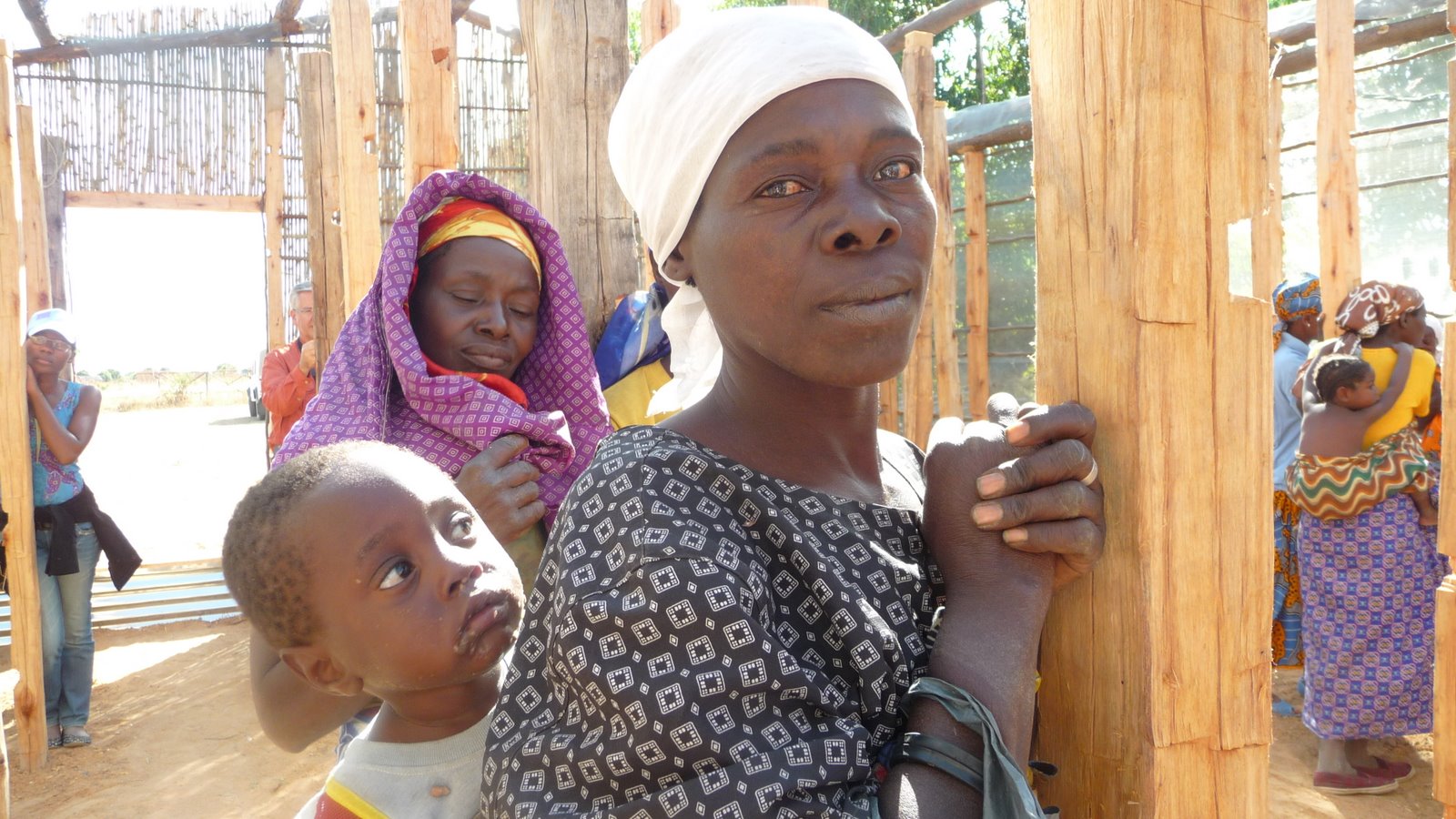Tellus Venture Associates is supporting a comprehensive development effort in Angola’s Huambo province. The project combines agricultural and marketing education, infrastructure building, seed (literally) capital, market development and microfinance. I became involved a couple of years ago when I helped my Rotary district raise $250,000 for the project, amounting to 25% of the first phase. The remaining 75% is from World Vision, a development and relief-focused NGO, and the Angolan government.
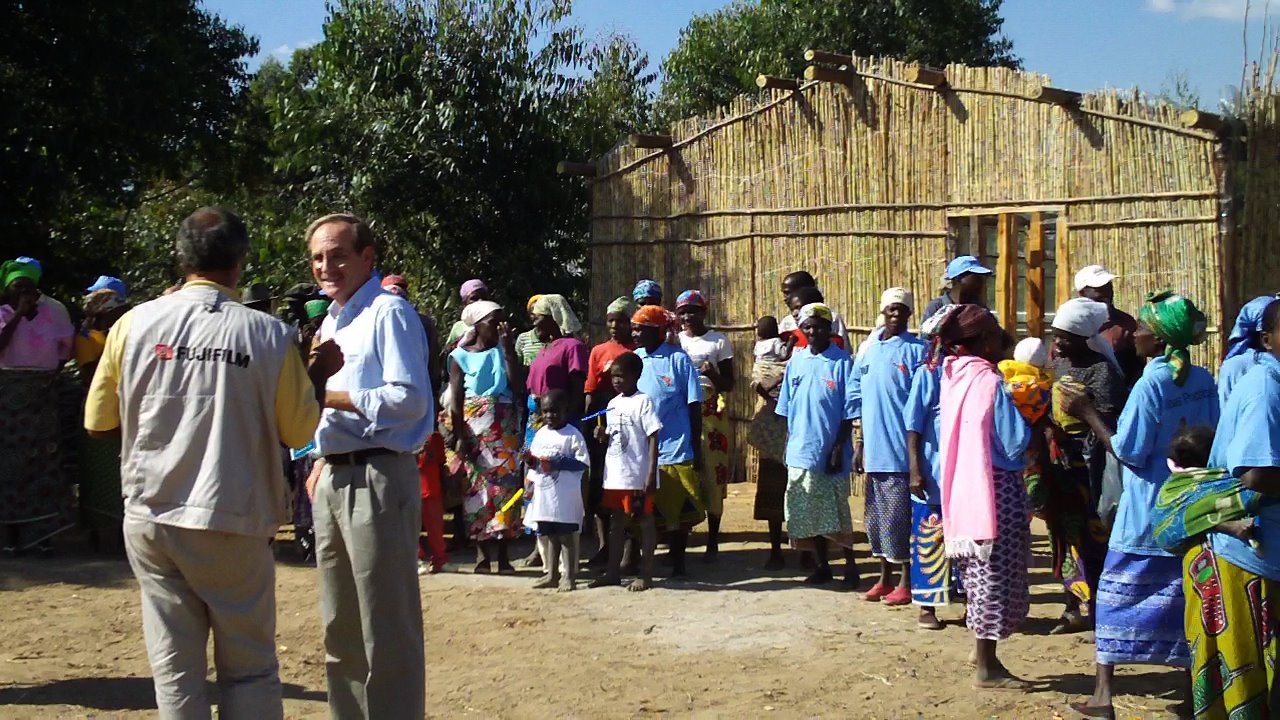
Manuel de Sousa, president of the Rotary Club of Luanda (left),
and Steve Blum (right) at the EU/World Vision agricultural
training center in Huambo province
In June 2009 I traveled to Huambo, with several fellow Rotarians, for due diligence on the current project as well as future needs assessment. The trip began for me in Cape Town, South Afica, where I met with District 9350’s leadership. Worldwide, Rotary is organized into about 500 districts, and the one that covers Angola is headquartered in Cape Town.
Building a potato
seed warehouse at
EU and World Vision
training facilityFrom there I went to Luanda, Angola’s capital, to meet with the project managers and join the rest of the Rotary team. World Vision, a Seattle-based NGO, has overall management responsibility for the Huambo project, collaborating with Rotary as well as the European Union, the Gates Foundation, the Rockefeller Foundation, the Angolan government and others.
Once everyone was in country, we flew to Huambo, located about 600 kilometers from Luanda, in the central highlands of Angola. It was ground zero for a 27 year civil war, that began in 1975 when the Portugese government abandoned its Angolan colony. The fighting was primarily between the U.S.-supported UNITA, based in Huambo, and the Soviet-backed MPLA, which counted Luanda as a stronghold and eventually achieved international recognition as the national government.
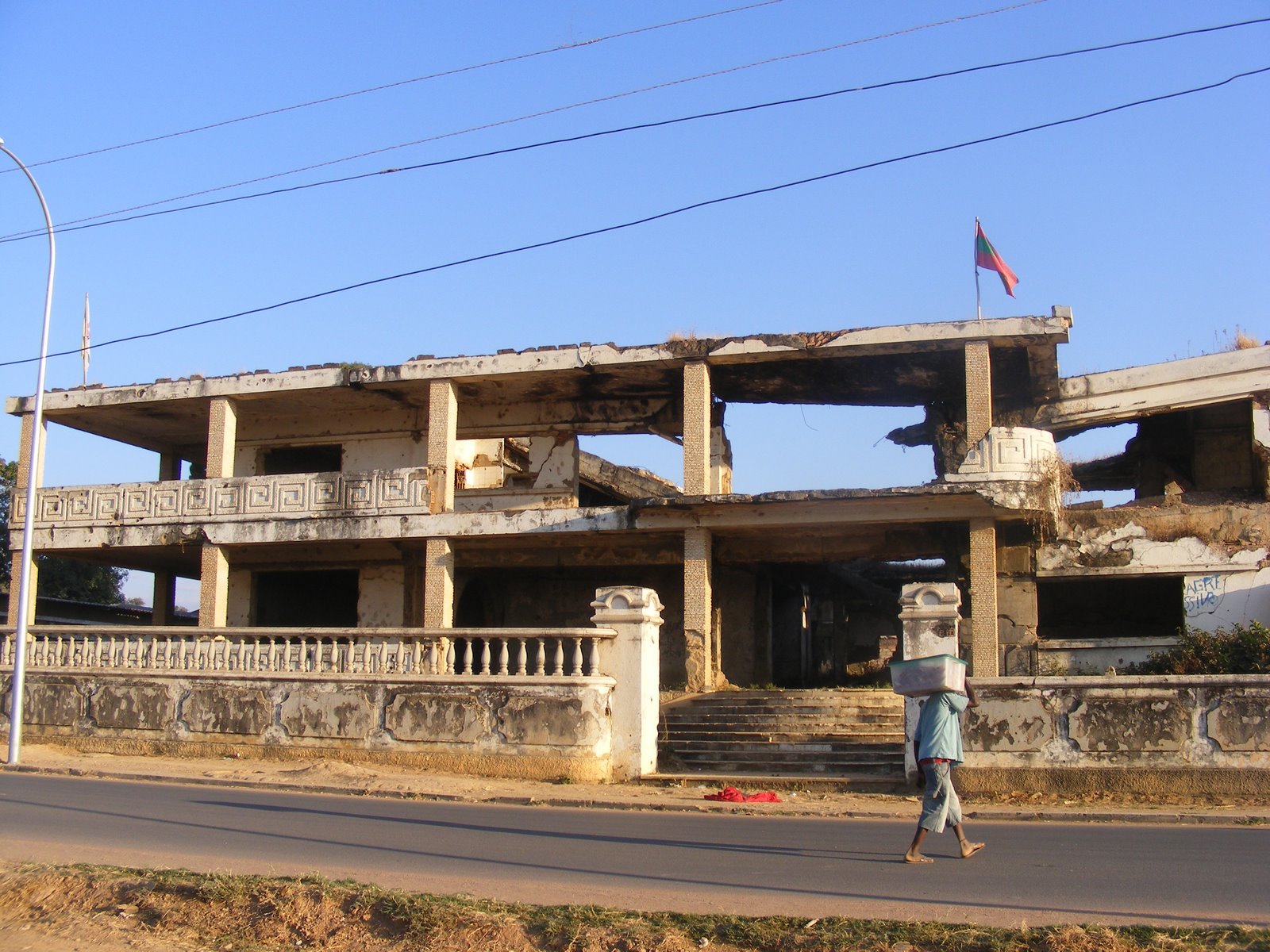
Party flag still flies
over bombed-out UNITA
headquarters in HuamboSouth African and Cuban troops supported the respective sides, as fighting swept back and forth across the province. The town of Huambo, Angola’s second largest city, changed hands several times and suffered heavy damage. In 2002, the last remnants of UNITA were defeated. The province is still inundated with landmines, despite years of de-mining operations by international organizations.
NGOs, such as World Vision and Rotary, the Angolan government and the international community are cooperating to rebuild Huambo, and develop a sustainable economy that can support the 3 or 4 million people who live in and around the province.
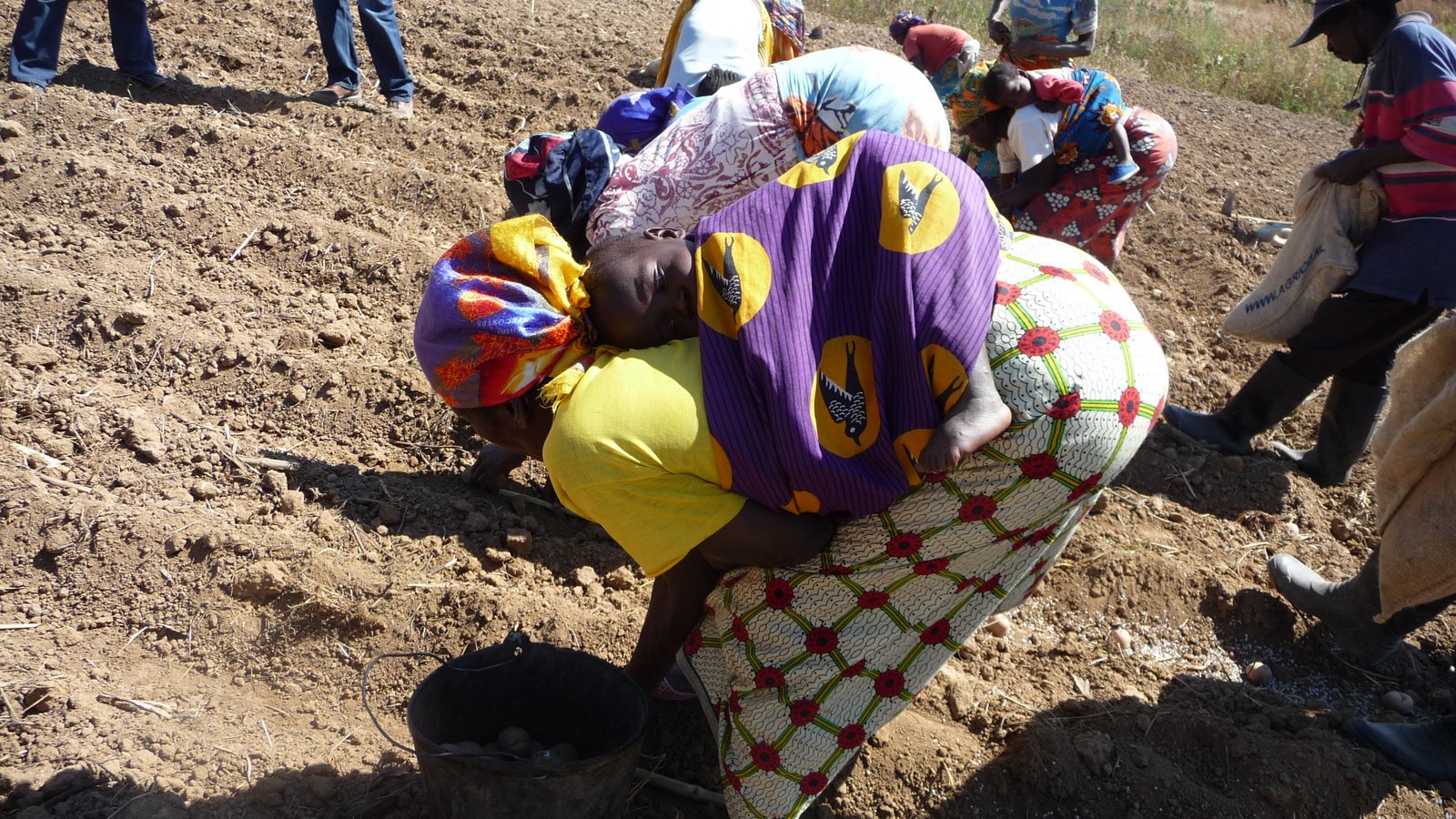
Planting Rotary-provided
seed, a woman works with
her baby on her
back, a common sight
in HuamboRotary’s $250,000 bought seed and fertilizer for 25 agricultural associations. These associations are based in villages that have access to a year-round source of water for gravity-fed irrigation, and have suitable soil and climate conditions for potato cultivation. Potatoes are transportable and can fetch up to $500 per ton in coastal market towns, making it an ideal cash crop for Angola.
Each association received extensive agricultural training, sponsored by the EU and World Vision, and planted test plots to determine the best potato variety to use and the optimum level of fertilizer application.
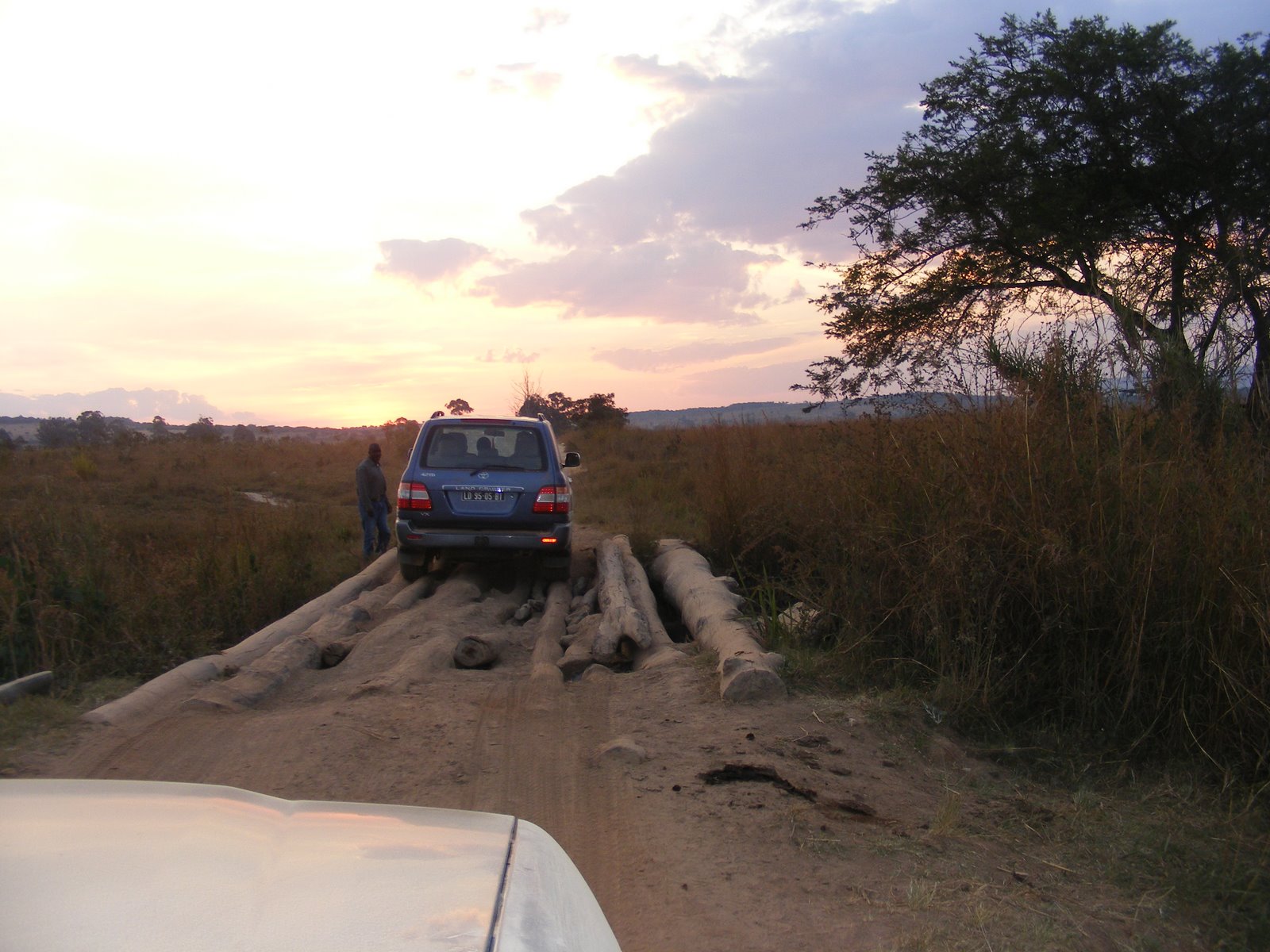
Off main roads,
rough dirt tracks
and makeshift bridges
link farms to marketsThe Gates Foundation and others are funding market development programs for the village associations. Lack of transporation makes it difficult to reliably serve coastal markets. Roads and rail lines were devastated by the civil war, and the extensive mine fields make rebuilding a slow and careful process. Even so, the road to Luanda is nearly all re-paved and a rail line to the coast is scheduled to open in 2010.
Much of the civil infrastructure is being rebuilt by the Chinese government, and Brazilian and Portuguese companies are also very much in evidence. Angola is not a destitute country. It is one of the major oil producers in Africa, sometimes ranking as the top producer. But severe structural inefficiencies and trade barriers created by the formerly Marxist government, combined with what is reported to be (and, to the extent of my experience, appears to be) endemic corruption means relatively little money benefits ordinary Angolans.
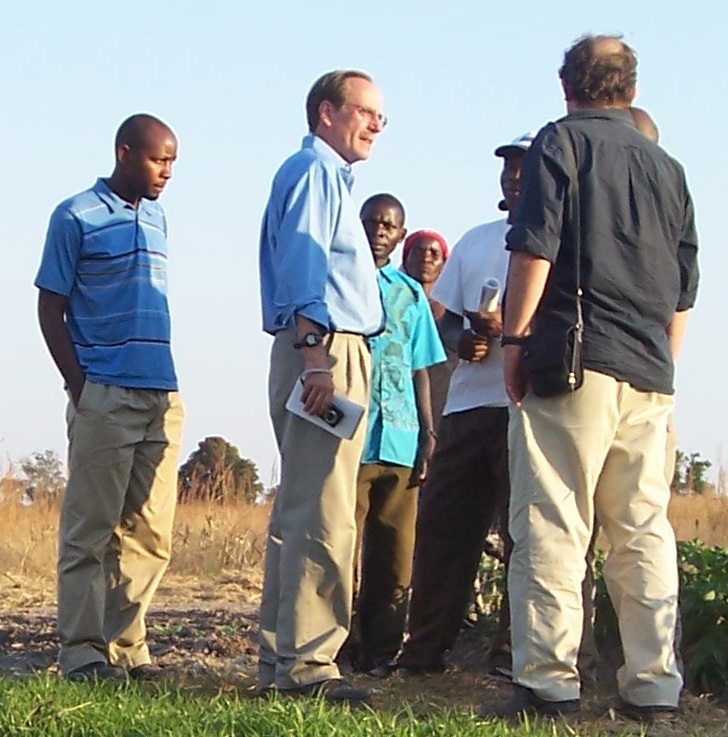
Reviewing results
from fertilizer
application testing We reviewed the tender documents for the seed and fertilizer, verified it was in warehouses with proper inventory control procedures, and saw the beginning of planting by one of the associations. We also met with association leaders and government officials, visited the marketing, training and test plot programs, and saw a microfinance program in action.
I took the overland route back to Luanda, traveling nine hours in a Land Cruiser. Most of the road had been repaved since the war, but some sections, particularly river crossings, are still under construction.
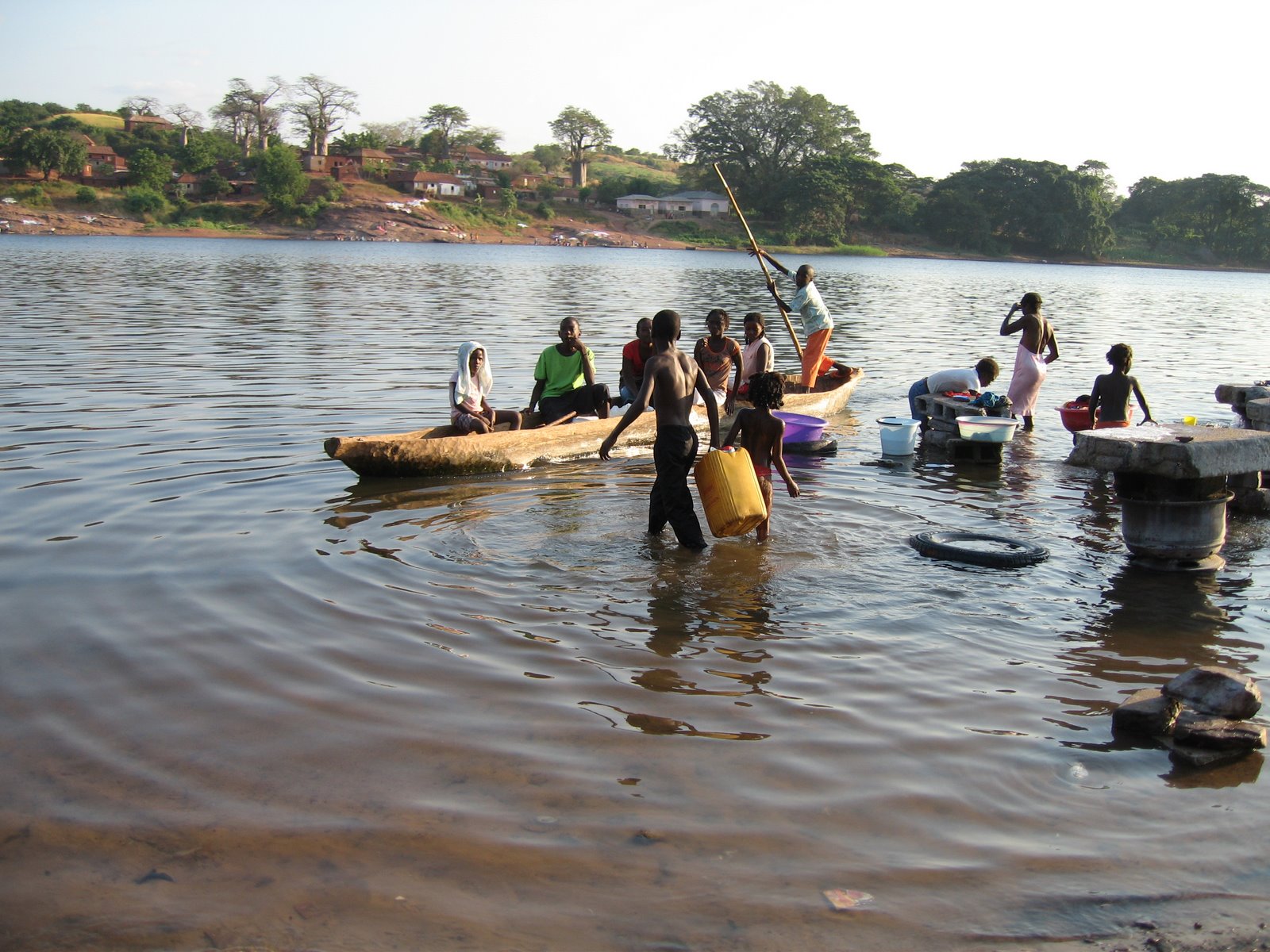
The Kwanza River is
Luanda’s lifelineOnce we left Huambo, the countryside was mostly undeveloped and sparsely settled, if not completely uninhabited. One reason was readily apparent: I saw minefield warnings and the remains of destroyed armored personnel carriers and light tanks most of the way. Only when we crossed the Kwanza River and approached Luanda did we see large towns and extensive development.
Our local Rotary team, from the Monterey and Fresno areas, will meet soon to plan next steps. At this point, we hope to raise another $250,000 that can once again be leveraged up into a million dollar project in Huambo.

